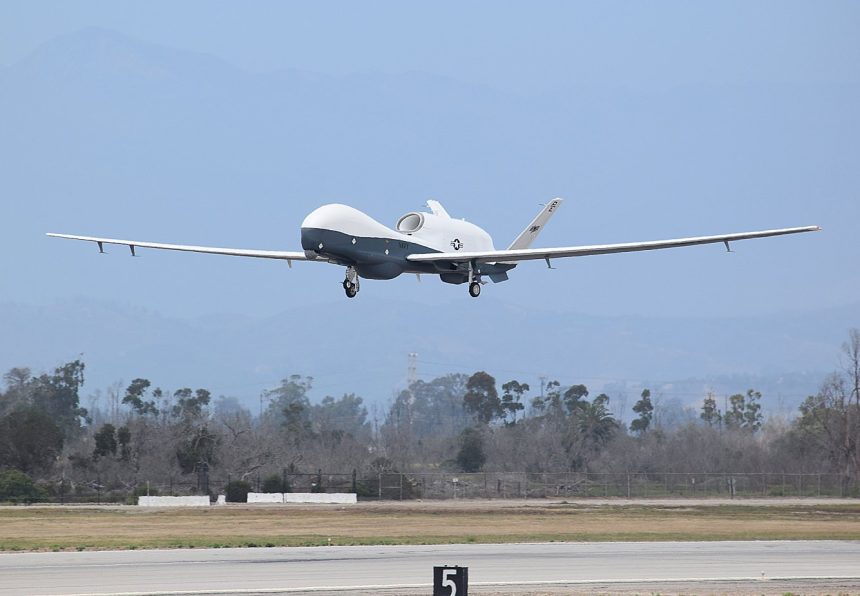The crash landing has caused some 2M USD damage to the UAVs (unmanned Aerial Vehicles).
An MQ-4C Triton experienced a technical failure that forced it to perform a gear up landing at Naval Base Ventura County (NBVC) at Point Mugu on Sept. 12, the U.S. Navy confirmed
“The Navy says as a precautionary measure, the pilots shut down the engine and tried to make a landing at Point Mugu but the aircraft’s landing gear failed to deploy and the aircraft landed on the runway with its gear up, causing some $2 million damage to the plane,” KVTA reported.
No further details about the unit have been disclosed so far, however, it’s worth noticing that two MQ-4C UAVs – #168460 and #168461 – have started operations with VUP-19 DET Point Mugu from NBVC on Jun. 27, 2018.
Here’s what we have written about that first flight back then:
The U.S. Navy’s MQ-4C “Triton” Broad Area Maritime Surveillance (BAMS) is an ISR (Intelligence Surveillance Reconnaissance) platform that will complement the P-8A Poseidon within the Navy’s Maritime Patrol and Reconnaissance Force family of systems: for instance, testing has already proved the MQ-4C’s ability to pass FMV (Full Motion Video) to a Poseidon MPA (Maritime Patrol Aircraft). An advanced version than the first generation Global Hawk Block 10, the drone it is believed to be a sort of Block 20 and Block 30 Global Hawk hybrid, carrying Navy payload including an AN/ZPY-3 multi-function active-sensor (MFAS) radar system, that gives the Triton the ability to cover more than 2.7 million square miles in a single mission that can last as long as 24 hours at a time, at altitudes higher than 10 miles, with an operational range of 8,200 nautical miles.
The U.S. Navy plans to procure 68 aircraft and 2 prototypes. VUP-19 DET PM has recently achieved an Early Operational Capability (EOC) and prepares for overseas operations: as alreadt reported, Point Mugu’s MQ-4Cs are expected to deploy to Guam later in 2018, with an early set of capabilities, including basic ESM (Electronic Support Measures) to pick up ships radar signals, for maritime Intelligence Surveillance Reconnaissance mission.
The Triton is expected to reach an IOC (Initial Operational Capability) in 2021, when two additional MQ-4Cs will allow a 24/7/365 orbit out of Andersen Air Force Base, Guam.
Image: file photo of an MQ-4C of VUP-19 Det PM during its first flight (U.S. Navy)







